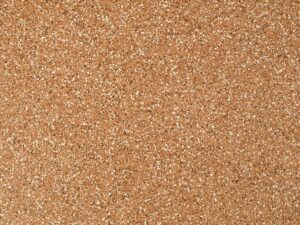When winter’s chill sets in and frost begins to glaze the edges of your windows, the security of your home takes on a new level of importance. Cold weather can be tough on ordinary locks-freezing temperatures and moisture often challenge their durability and functionality. Choosing the best locks for homes in cold weather means finding mechanisms designed to withstand the icy grip of winter without compromising on safety. In this article, we’ll explore locks built to brave the cold, helping you keep your home secure and accessible no matter how harsh the season becomes.
Table of Contents
- Choosing Durable Materials for Freezing Temperatures
- How Weather Resistance Influences Lock Performance
- Top Features to Look for in Cold Climate Locks
- Recommended Brands Excelling in Winter Security
- Installation Tips for Maximizing Lock Longevity in Cold Conditions
- Q&A
- The Way Forward

Choosing Durable Materials for Freezing Temperatures
When securing your home in icy conditions, it’s essential to select locks crafted from materials that can withstand subzero temperatures without compromising performance. Stainless steel and brass are top contenders, known for their resistance to rust and corrosion caused by moisture and frost. Unlike cheaper metal alloys that can become brittle or seize up, these metals maintain their structural integrity, ensuring your lock operates smoothly through the chilliest months. Plastic-coated components also add a layer of protection by shielding internal mechanisms from ice build-up and freezing rain.
In addition to the materials themselves, the lock’s internal lubricants play a critical role in cold-weather reliability. Locks treated with Teflon or graphite-based lubricants are far less prone to freezing and sticking. Avoid oil-based lubricants, which can thicken and gum up in low temperatures. Below is a quick reference chart summarizing the best materials and coatings for cold-weather locks:
| Material | Weather Benefit | Cold-Weather Suitability |
|---|---|---|
| Stainless Steel | Rust-resistant, strong | Excellent |
| Brass | Corrosion-resistant, aesthetic | Very Good |
| Zinc Alloy | Cost-effective, moderate strength | Fair |
| Plastic Coating | Ice barrier, weather shield | Excellent |

How Weather Resistance Influences Lock Performance
Locks that thrive in cold climates are specifically engineered to withstand the harsh conditions brought on by freezing temperatures, moisture, and ice. Weather-resistant locks often use materials like stainless steel or brass, which resist rust and corrosion, ensuring longevity even when exposed to snow and rain. Additionally, protective coatings prevent water ingress, reducing the risk of internal mechanisms freezing or seizing during winter months. This resilience not only maintains the lock’s aesthetic appeal but also guarantees reliable security when you need it most.
Beyond materials, the design plays a crucial role in enhancing lock performance in cold environments. Features such as sealed keyways, built-in heaters, or antifreeze lubricants can significantly reduce operational difficulties, such as key jamming or sluggish turning. Here is a quick comparison of common lock features beneficial for cold weather use:
| Feature | Benefit in Cold Weather |
|---|---|
| Sealed Keyway | Prevents snow and ice buildup inside the lock cylinder |
| Corrosion-Resistant Materials | Ensures longevity despite exposure to moisture and salt |
| Antifreeze Lubricants | Keeps internal parts moving smoothly without freezing |
| Weatherproof Covers | Protects the keyhole and lock body from harsh elements |

Top Features to Look for in Cold Climate Locks
When choosing locks suitable for freezing temperatures, durability in extreme weather is non-negotiable. Prioritize locks with weather-resistant coatings that prevent rust and corrosion, ensuring consistent performance even after heavy snowfall or sleet. Another crucial aspect is the lock’s ability to resist ice buildup, which can jam traditional mechanisms. Many cold climate locks incorporate self-lubricating materials or sealed housings to keep internal components moving smoothly, reducing the chances of freeze-related malfunctions.
Smart functionality also plays a pivotal role in modern cold-weather security. Look for features such as:
- Keyless entry with keypad or biometric options, so you don’t have to fumble with frozen keys.
- Remote monitoring through apps, allowing you to check and control your locks without braving the cold.
- Battery backup systems designed to function in sub-zero temperatures, preventing lockouts even during winter power outages.
| Feature | Benefit |
|---|---|
| Weather-resistant finish | Prevents rust and corrosion |
| Sealed locking mechanism | Stops ice buildup |
| Keyless entry | Easy access in cold |
| Battery backup | Uninterrupted security |

Recommended Brands Excelling in Winter Security
When selecting locks that can endure the harsh bite of winter, certain brands rise above the rest due to their innovative cold-weather technologies and robust build quality. Mul-T-Lock is a standout, offering cylinders and deadbolts fortified with frost-resistant mechanisms and smooth-operation cores that won’t seize in freezing temperatures. Their patented designs ensure resilience, making them a trusted choice for those in icy climates who don’t want to compromise on security or ease of use. Similarly, Schlage combines cutting-edge weatherproof finishes with anti-corrosion materials, guaranteeing longevity and performance even through snowstorms and sub-zero chills.
For homeowners prioritizing both durability and style, Yale provides an impressive lineup of locks engineered specifically for extreme environments. Their models feature enhanced sealing to prevent moisture ingress and internal lubrication systems that keep the locking mechanisms fluid and responsive. Meanwhile, Medeco focuses on high-security features that maintain integrity under ice and snow, making them a favorite among security experts. Below is a quick overview of what makes these brands exceptional:
| Brand | Winter Durability | Key Feature |
|---|---|---|
| Mul-T-Lock | Exceptional frost resistance | Patented cold-proof cylinders |
| Schlage | Strong anti-corrosion coating | Weatherproof finish |
| Yale | Sealed against moisture | Smooth internal lubrication |
| Medeco | Freeze-proof high security | Cutting-edge locking integrity |

Installation Tips for Maximizing Lock Longevity in Cold Conditions
To ensure your lock withstands harsh winter temperatures, begin by selecting a location sheltered from direct exposure to snow and icy rain. Installing the lock under an overhang or porch can reduce moisture buildup, a key factor that promotes freezing. Additionally, avoid positioning the lock where cold air drafts are strongest, as sustained freezing winds can cause internal mechanisms to stiffen or seize. Applying a lubricant specifically designed for cold climates before installation will provide a protective barrier against corrosion and mechanical wear, keeping your lock’s performance smooth throughout the winter months.
During installation, pay close attention to alignment and tightness. Misaligned locks in freezing environments are more prone to jamming as metal contracts at low temperatures. Use a level and calibrate the strike plate to ensure the bolt slides effortlessly. If possible, incorporate a lock cover or shield to block ice and debris from entering keyholes and internal parts. Regular maintenance, including spring cleanings to remove dirt and reapplication of low-temperature lubricants, rounds out a strategy that guarantees your lock remains both secure and functional through the chilliest seasons.
Q&A
Q&A: Best Locks for Homes in Cold Weather
Q1: Why do I need special locks for cold weather?
A1: Cold weather brings unique challenges for home security. Freezing temperatures can cause some locks to freeze up or become brittle, making them difficult to operate or even damaging the lock mechanism. Choosing locks designed to withstand these conditions ensures your home’s security isn’t compromised when the cold sets in.
Q2: What features should I look for in locks for cold climates?
A2: Look for locks made from weather-resistant materials like stainless steel or brass that resist rust and corrosion. Features such as protective covers, insulated components, and lubricants that don’t freeze are important. Additionally, locks with a smooth mechanism reduce the chance of freezing or jamming in low temperatures.
Q3: Are electronic or smart locks a good choice in cold weather?
A3: Many smart locks perform well in cold weather, especially those designed with weatherproof seals and low-temperature batteries. However, extreme cold can still affect battery life and touchscreen responsiveness. If you opt for a smart lock, check reviews specifically mentioning their cold weather performance or consider models with mechanical key backup.
Q4: Can traditional deadbolts hold up in freezing temperatures?
A4: Yes, many traditional deadbolts made from high-quality materials are suitable for cold climates. However, you should ensure they are properly lubricated with a graphite or silicone-based lubricant suitable for low temperatures, as regular oils can thicken or freeze, impairing function.
Q5: Is there a difference between interior and exterior locks for cold weather?
A5: Generally, interior locks are less exposed to the elements and thus don’t require the same level of weather resistance. Exterior locks need to be tougher, featuring robust weatherproofing to protect against moisture, ice, and extreme cold.
Q6: How can I maintain my locks during winter to keep them functional?
A6: Regular maintenance is key-clean the lock exterior, apply appropriate cold-weather lubricants, and check for signs of rust or corrosion. Using a lock cover or weather shield during snowstorms or rain can also protect your locks from freezing up.
Q7: What are some top recommended locks for cold climates?
A7: Brands like Schlage, Kwikset, and Medeco offer models built to endure harsh weather. Specifically, look for deadbolts with weather-resistant finishes, smart locks with built-in heaters or insulation, and padlocks designed for outdoor use in freezing temperatures.
Q8: How does installation impact lock performance in cold weather?
A8: Proper installation ensures the lock aligns correctly and seals well against drafts and moisture. A poorly installed lock can be more prone to freezing or damage from the elements, so it’s worth having a professional install or at least inspect your lock system before winter arrives.
Q9: Can frozen locks be safely thawed at home?
A9: Yes, safely warming your frozen lock with techniques like using a hairdryer or rubbing alcohol can help. Avoid open flames or excessive heat which can damage the lock’s internal parts. Preventive measures, like warming keys before use or applying lubricant, are also effective.
Q10: Are there any innovative lock technologies designed specifically for extreme weather?
A10: Some manufacturers have developed locks with self-heating elements or advanced sealing systems to combat freezing. Others incorporate temperature-resistant electronics or moisture-absorbing coatings. While these innovations may cost more, they can be a worthwhile investment for homes in extremely cold regions.
The Way Forward
As winter’s chill sets in and frost begins to lace your windows, the importance of a reliable lock becomes crystal clear. Choosing the best lock for your home in cold weather isn’t just about security-it’s about peace of mind when the wind howls outside and temperatures drop. With the right combination of durability, frost resistance, and smart design, your locks can stand strong against the elements, keeping your home safe and warm all season long. So, as you bundle up this winter, make sure your home’s defenses are just as prepared for the cold. After all, the best lock isn’t just a barrier-it’s a winter guardian.





